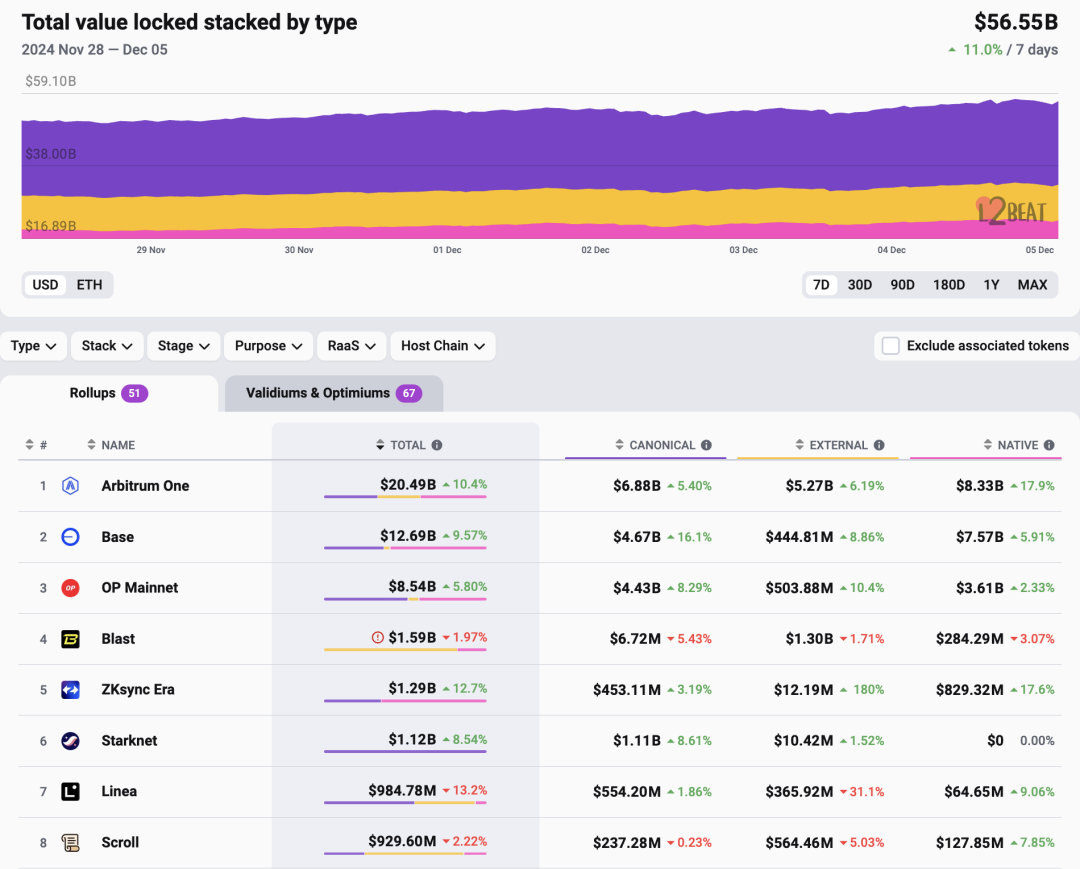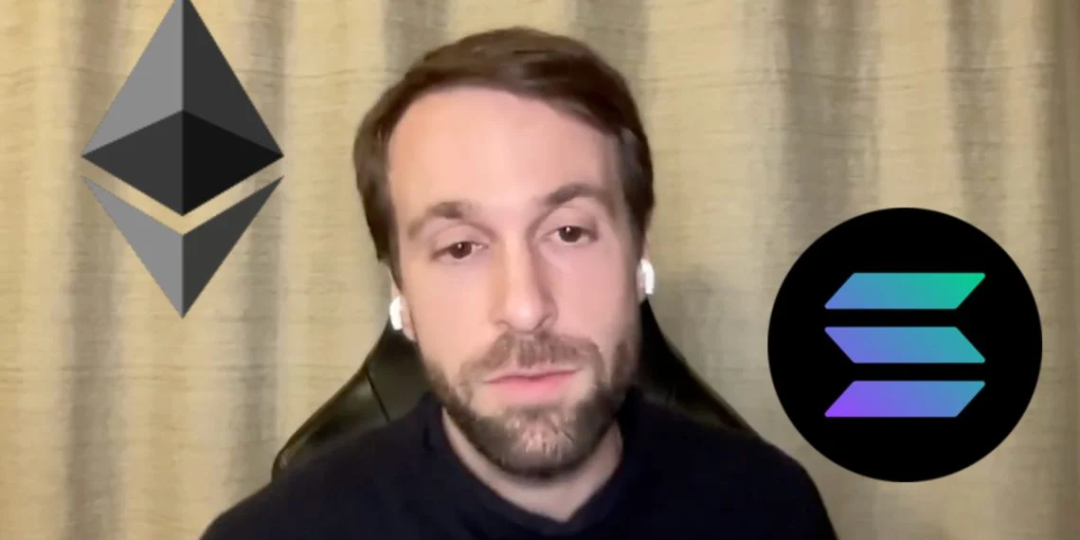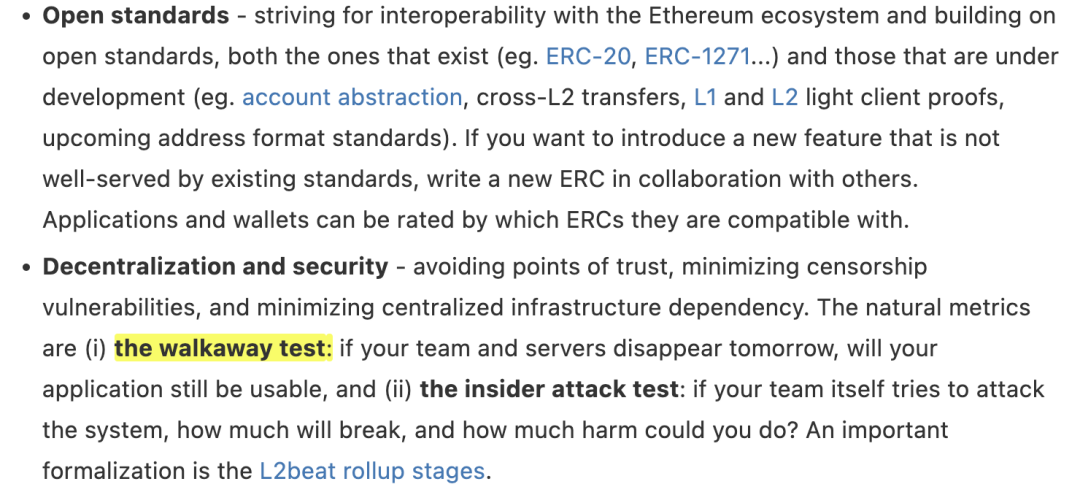

Content & Review | Ethereum Chinese Weekly
Organization & Layout | Connie
Image Source: Internet
"Ethereum Chinese Weekly"
—— Building an Information Bridge for Chinese Ethereum
Introduction to "Ethereum Chinese Weekly"
Every Monday at 2 PM (UTC+8), the Ethereum Chinese Weekly invites well-known project engineers, KOLs, and others from the Web3 industry to share insights on Ethereum industry topics, interpretations of reports from renowned institutions, analyses of new projects, and highlights of current trends.
The "Ethereum Chinese Weekly" (hereinafter referred to as "Weekly") gathers the exciting content from the "Ethereum Chinese Weekly Meeting," capturing the latest news and in-depth analyses, continuously delivering fresh and substantial content to you.
The Ethereum Chinese Weekly Meeting and the "Weekly" are jointly initiated by Web3BuidlerTech and ETHPanda, with support from communities like LXDAO.
Together with you, we are building an information bridge for Chinese Ethereum.
Ethereum Chinese Weekly Video
The exciting content of this issue can be accessed via the following link, or click the original text:
YouTube:
https://youtu.be/6E4--VO8jMg
Materials for this issue:
https://www.notion.so/web3buidler/Web3BuidlerTech-702bd1ab80a7422586f1edac1917fa9c
Table of Contents
This issue of the "Weekly" consists of 2 parts, taking approximately 10 minutes to read.
- Overview of Industry Information from Last Week
Blockchain News
Data Trends
- In-Depth Content Interpretation
Solving the Rug Problem: How the Commit Protocol, favored by Vitalik, introduces accountability mechanisms into the crypto industry
Ethereum Foundation researcher Justin Drake: The golden age of Solana is over, and it will be surpassed by ETH L2
Tencent's "Pionex" interviews Ethereum's Vitalik: The world should not fall into a power kingdom dominated by AI
Doug Colkitt's explanation of the recent large number of revert transactions on Base
Delphi's data analysis of Base Chain
How to evaluate decentralized projects? Interpretation of Vitalik Buterin's proposed "Leaving the Test"
Overview of Industry Information from Last Week
(November 25 to December 1)
Blockchain News
- Ethereum protocol developer and Prysm maintainer Terence stated on social media that the Ethereum core developer meeting (AllCoreDevs) has reached a preliminary consensus to increase the blob target/max from 3/6 to 6/9, with specific implementation requiring further testing and development network results.
Learn more:
https://x.com/terencechain/status/1862151357727465687
- On November 29, Ethereum Foundation researcher Justin Drake revealed that the foundation is investing tens of millions of dollars in zkVM (zero-knowledge virtual machine) technology. Investment projects include zkRISC-V formal verification (verified-zkevm.org), Poseidon cryptanalysis (poseidon-initiative.info), and the L2beat analysis platform for zkVM (ethproofs.org).
Learn more:
https://x.com/drakefjustin/status/1862175473196777748
- On November 28, Ethereum Foundation researcher Justin Drake published a paper disclosing details related to the BeamSNARKs algorithm. BeamSNARKs is an enhanced ZK algorithm that allows provers to prove the truth of statements to verifiers without revealing underlying data and without requiring interaction.
For Ethereum, the BeamSNARKs developed by Moonchain is transformative in two key aspects: privacy and scalability. BeamSNARKs allow for the verification of transactions or computations without exposing sensitive data, thus supporting use cases like confidential transactions and private smart contracts.
It is reported that Beam Chain is an indispensable consensus layer improvement for the Ethereum 3.0 era. This is a proposal announced by Justin Drake at DevCon to redesign Ethereum. Ethereum is expected to take several years to transition completely from the PoS era to the ZK era, at which point Ethereum itself will fully possess ZK capabilities.
View the paper:
https://www.preprints.org/manuscript/202411.2216/v1
- Vitalik Buterin, in an interview with Tencent's "Pionex," expressed concern that if particularly wise individuals do not engage in Crypto, those remaining in the Crypto field may lack interesting ideas, with the only applications being financial ones that have been around for many years. Regarding why the Ethereum ecosystem and Web3 ecosystem still lack practical application products, Vitalik stated that before this year, transaction fees were too high, some important technologies were not mature, and issues of account security and privacy had not been resolved. Therefore, before this year, our industry did not have enough technology to create applications that ordinary people could participate in. This year, we have finally begun to address these issues. This year is the best time to create meaningful applications.
Learn more:
https://news.qq.com/rain/a/20241124A06Q6Y00
- Vitalik Buterin posted on Warpcast stating, "The idea of developing applications for 'we need applications' is fundamentally soulless; it completely abandons the notion that cryptocurrency is about achieving concrete changes in the world, making it freer, more open, and more collaborative.
What we need are specific categories of applications that (i) truly make the world freer, more open, and more collaborative, and (ii) gain organic usage.
We do have such examples: Polymarket is good, and anoncast also has a great opportunity to showcase the best freedom of speech while avoiding the pitfalls of spam and low-quality content."
Learn more:
https://warpcast.com/vitalik.eth/0x9c408a50
- Jesse Pollak, head of the Base protocol, emphasized that there are no plans to launch a token for the Base network, focusing instead on building globally loved products that solve real problems. He mentioned the example of Hyperliquid, illustrating that it is beneficial not to add price complexity before product launch.
Learn more:
https://x.com/jessepollak/status/1862905802564203003
- Starknet announced that v0.13.3 has been launched on the mainnet, which will enhance Starknet's data efficiency, reducing Blob gas costs on the mainnet by about 5 times, meaning lower fees for all Starknet users.
Learn more:
https://x.com/Starknet/status/1861762891776684222
- Blockchain infrastructure company Flashbots launched BuilderNet, a decentralized block building network on Ethereum, aimed at "eliminating censorship" and addressing one of the network's biggest "bottlenecks." BuilderNet was launched on November 26, aiming to enable "multi-party collaboration to build blocks." Notably, in recent weeks, about 88% of Ethereum blocks have been built by Beaverbuild and Titan Builder. Coinbase's protocol expert Viktor Bunin stated on X that this is "absolutely significant" as it will "eliminate censorship" and exclusive order flow trading on Ethereum.
Learn more:
https://buildernet.org/docs
- Uniswap Labs launched a $15.5 million official bug bounty program for v4, incentivizing responsible vulnerability disclosures. All reports must be submitted directly to the v4 Bug Bounty page on Cantina within 24 hours of discovery. The official statement notes that vulnerabilities in third-party contracts not deployed by Uniswap Labs, issues listed in contract audits in the v4 repository, vulnerabilities in third-party contracts or applications using contracts deployed by Uniswap Labs, and issues flagged in previous internal reviews, competitions, and audits are not covered by the program. Uniswap v4 peripheral contracts are currently not in scope but are expected to be added to the bug bounty program soon.
Learn more:
https://x.com/Uniswap/status/1861409607505064238
- According to The Block, the major upgrade Avalanche9000 for the Avalanche mainnet has been launched on the testnet, reducing chain deployment costs by 99.9%. At the same time, a $40 million Retro9000 retroactive reward program has been launched to incentivize developers working on Layer 1 blockchains and related tools on the testnet.
This upgrade includes two community proposals: ACP-77 enhances Layer 1 validator flexibility, and ACP-125 reduces the base fee by 96%. According to The Block data, AVAX's trading volume reached $1.9 billion in the past 24 hours, with the coin price rising over 8%. Avalanche Foundation CEO Aytunç Yildizli stated that this upgrade will drive enterprises to establish self-controlled Layer 1 blockchains within the ecosystem.
Learn more:
https://www.avax.network/blog/avalanche9000-testnet-launches-with-up-to-40m-in-retroactive-rewards
- Dilation Effect discovered a precision loss vulnerability in the core pool series contracts of the Venus lending protocol, which can easily allow attackers to drain all funds when the protocol adds new collateral assets.
The VToken contract of the core pool has a division precision loss issue when calculating redeemTokens in the redeemUnderlying function. If the protocol adds new collateral assets on-chain, when the LTV is greater than 0 and the new asset pool is an empty pool (totalSupply=0), if the new asset is mintable, it can be exploited by hackers. This puts all funds within the core pool at risk.
Learn more:
https://x.com/dilationeffect/status/1861356833598001221
- The Filecoin Fast Finality (F3) team is conducting final phase preparation tests on the mainnet. F3 will shorten the finality time from 900 block heights to about 2 blocks, bringing advantages such as faster transaction confirmations, enhanced cross-chain experiences, more efficient lightweight user ends, and streamlined data storage processes for storage providers.
Learn more:
https://x.com/FilecoinTLDR/status/1861773207532945879
- According to ENS Sales Bot, the wallet.eth domain was sold for 115 ETH (approximately $420,000).
Data Trends
- L2BEAT data (as of December 5, 2024):

Learn more:
https://l2beat.com/scaling/tvl
The total market capitalization of stablecoins is currently reported at $192.7 billion, setting a new historical high. It has increased by 1.73% over the past week. Additionally, the current market share of USDT is 69.72%, with a circulating market value of $134.348 billion, increasing by 1.42% over the past week.
According to Cryptopolitan, Uniswap's monthly trading volume in November reached $38 billion, nearly a 50% increase from October, breaking the previous record of $34 billion. This surge is mainly attributed to the exchange's performance on multiple Ethereum Layer 2 solutions such as Arbitrum, Base, and Polygon, with Arbitrum contributing the most at $19.5 billion.
In-Depth Content Interpretation
Solving the Rug Problem: How the Commit Protocol, favored by Vitalik, introduces accountability mechanisms into the crypto industry

The realization of personal goals requires external constraints and motivations, but modern society generally lacks effective accountability mechanisms. The crypto industry has seen a series of Rug events, such as the DEXX platform's rights protection and ZKasino's fund misappropriation, highlighting a crisis of trust in the industry. The Commit protocol has emerged in response and has received praise from Vitalik. The Commit protocol is an on-chain accountability mechanism that incentivizes participants to achieve personal goals or commitments by staking cryptocurrency as collateral. Participants are required to stake a certain amount of cryptocurrency (such as WETH) before starting a task; if the task is completed, they can reclaim their stake and receive rewards; if the task is not completed, their staked share will be shared by the enforcer. The core idea is to achieve accountability in goal setting through the staking mechanism, ensuring that participants face real financial consequences for whether or not they complete the task.
Read the original text:
https://news.marsbit.co/20241129104651457264.html
Ethereum Foundation researcher Justin Drake: The golden age of Solana is over, and it will be surpassed by ETH L2

Ethereum Foundation researcher Justin Drake stated in the latest episode of The Defiant podcast that the golden age of Solana is coming to an end, as its once-proud advantages in latency and throughput will be surpassed by Ethereum L2. In terms of latency, Solana's average latency is 200 milliseconds, while Ethereum's pre-confirmation mechanism can reduce latency to nearly 10 milliseconds; in terms of throughput, Ethereum L2's throughput is already about 100 times higher than Ethereum L1 and is likely to grow another 1000 times, or even 10,000 times, next year. Solana's activities are concentrated on a single server, and its performance is nearing its limits, making it difficult to significantly increase throughput. (However, last week Mert Mumtaz stated that he has been developing a new performance optimization system for Solana called BTS, which shows promise in testing to expand Solana's TPS by 1000 times without major core changes. Therefore, whether Solana can maintain its advantage or be surpassed remains uncertain.)
Full blog:
https://x.com/DefiantNews/status/1861088679990587562
Chinese translation:
https://news.marsbit.co/20241201174454019084.html
Tencent Pionex interviews Ethereum's Vitalik: The world should not fall into a power kingdom dominated by AI

The world today is being impacted by two major technological forces: artificial intelligence represented by OpenAI and crypto technology represented by Web3. Vitalik believes that AI and crypto technology represent two entirely different technological philosophies: AI represents centralized power, acquiring power through computing power and data, which will long-term surpass human intelligence, while crypto technology aims to solve trust issues and uphold decentralized values. Regarding AI development, he is particularly concerned about privacy risks and the concentration of power, thus supporting decentralized AI, while pointing out that OpenAI's shift of "sacrificing open-source for safety and sacrificing safety for profit" is worrisome. Regarding future developments, Vitalik believes that AI and blockchain may achieve some form of integration, such as AI participating in the fair game rules of blockchain construction, and the best way to cope with superintelligence may be the fusion of biology and silicon, making humans a part of it. He emphasizes that the blockchain industry should strive to create truly meaningful applications to promote the establishment of a fairer and more open world.
Click here to view the full text on the WeChat public account "Tencent Technology," or copy the following link:
https://mp.weixin.qq.com/s/zHsNRYXrSEWoQHg-2Iqf2g
Doug Colkitt's explanation of the recent large number of revert transactions on Base

@smyyguy discovered that when the Base network reached a new high of 131 TPS, the transaction failure rate was abnormal: failed transactions accounted for 25% of gas fees and 53% of total transaction volume. @0xdoug analyzed that this is mainly due to front-running bots on the Clanker platform. These bots exploit the low gas fees of L2 by pre-sending transactions in each block to probe new pools; although most attempts fail, as long as they discover a new pool, they can immediately front-run within the same block. In response, @0xdoug proposed a solution: Clanker can bypass Uniswap's NFTPositionManager contract and directly mint liquidity in the pool, fundamentally preventing the bots' probing behavior.
Learn more:
https://x.com/0xdoug/status/1861662510023123030
Delphi's data analysis of Base Chain

@Delphi_Digital's latest report shows: Against the backdrop of rapid growth in the overall on-chain economy (with daily trading volume increasing by 50% year-on-year and TVL growing by 70% to over $70 billion), Base is exhibiting even more rapid growth, establishing its position as a leading L2. By the end of October, Base's core metrics have seen comprehensive growth: daily trading volume increased by 1900%, and TVL grew by 470%; weekly trading volume of stablecoins skyrocketed from $620 million to $62 billion (an increase of over 9800%), capturing a market share of 33%.
It is noteworthy that, despite the surge in demand, Base's average transaction fees have decreased by 95% (from $0.44 in the first quarter to $0.019 in October). This low-cost advantage, combined with a developer-friendly ecosystem, has led to strong user growth and retention. At the same time, Base has developed into a diversified ecosystem, with over 60% of on-chain applications distributed across areas outside of DeFi, such as gaming (20%), collectibles (18.8%), and social (15.3%).
Read the original text:
https://members.delphidigital.io/reports/exploring-bases-role-in-the-growing-on-chain-economy?utmsource=twitter&utmmedium=social&utm_campaign=BaseOnchainEconomyThread#total-onchain-active-addresses-2841
How to Evaluate Decentralized Projects? Interpreting Vitalik Buterin's "Walk Away Test"

How can we assess the degree of decentralization of blockchain projects? Ethereum founder Vitalik Buterin's "Walk Away Test" provides an answer: If the project team and servers suddenly disappear, can the project continue to operate? The "Walk Away Test" evaluates projects from three dimensions: project development (can it operate independently after the team disbands), economic model (is it sustainable), and community governance (does it rely on core members). Taking Layer 2 projects as an example, Vitalik proposed a risk grading standard based on the project's dependence on "Training Wheels," which was later developed into a complete risk rating system by L2Beat. This indicates that the "Walk Away Test" can further evolve into a universal risk rating tool for assessing various decentralized projects.
Learn more:
https://www.panewslab.com/zh/articledetails/iu9x0kde.html
Original text "Making Ethereum alignment legible":
https://vitalik.eth.limo/general/2024/09/28/alignment.html
This concludes the content of this week's Ethereum Chinese Weekly. Thank you for reading!
Next Monday at 14:00 (UTC +8), we look forward to sharing the new issue with you! (Joining method at the end of the article)
Image source: Internet, please delete if infringing.
Co-initiated Community

Supporting Community

LXDAO is a research and development DAO focused on sustainably supporting valuable Web3 public goods and open-source projects.
Join Us


免责声明:本文章仅代表作者个人观点,不代表本平台的立场和观点。本文章仅供信息分享,不构成对任何人的任何投资建议。用户与作者之间的任何争议,与本平台无关。如网页中刊载的文章或图片涉及侵权,请提供相关的权利证明和身份证明发送邮件到support@aicoin.com,本平台相关工作人员将会进行核查。




